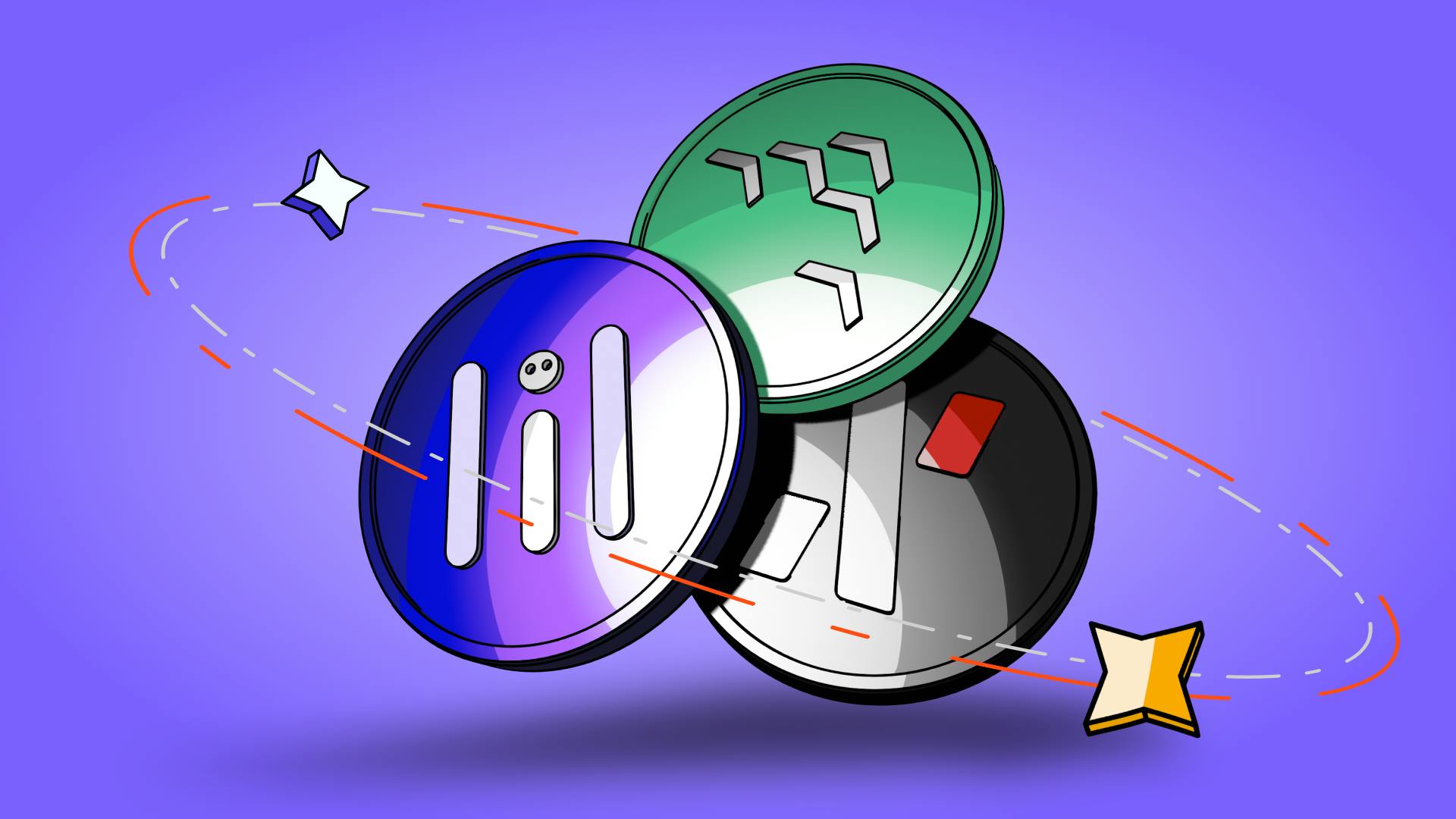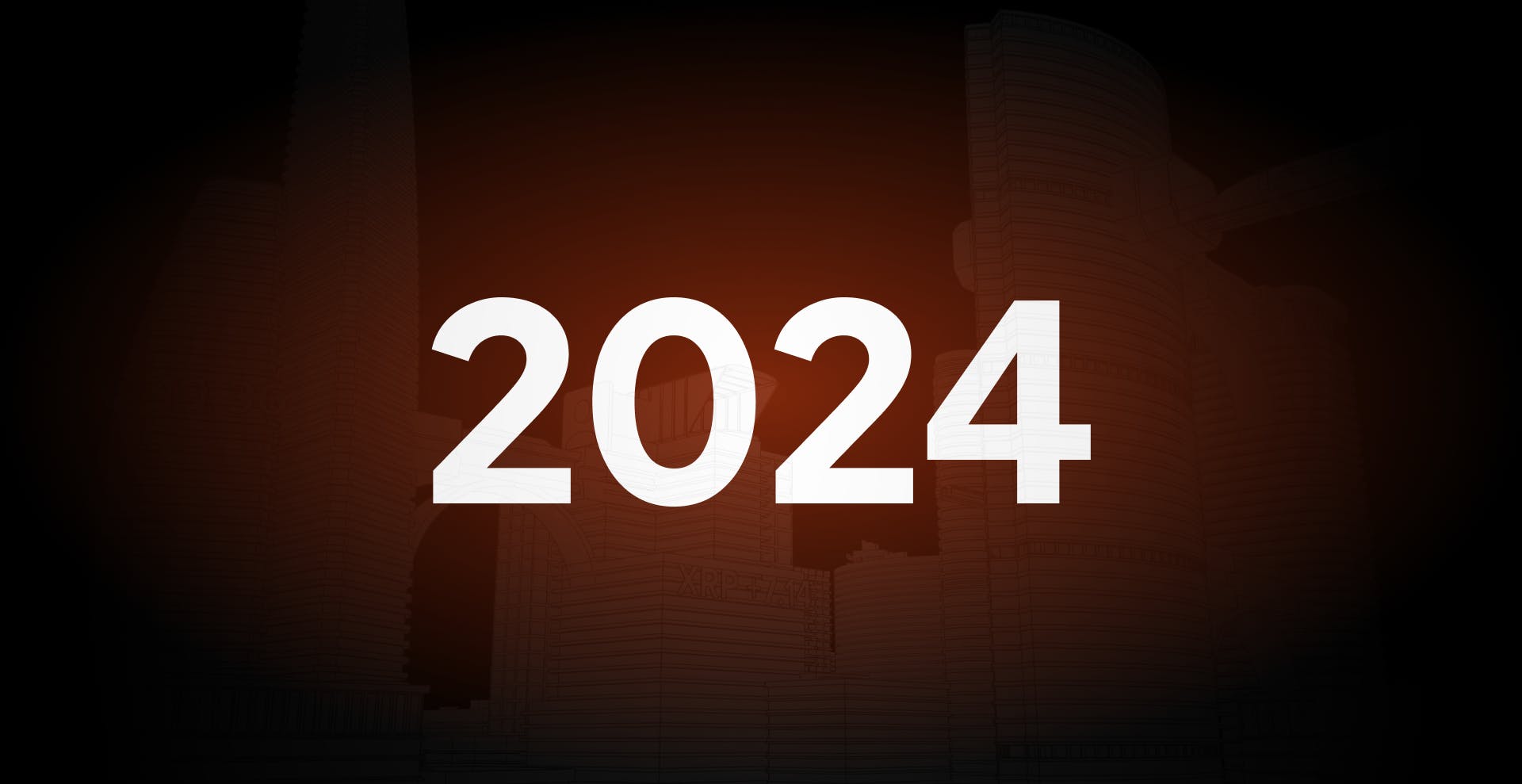3 Low Cap Cryptocurrencies to Watch in 2024: LILAI, ALPH, THT
December 5, 2025

by Coinmetro
December 5, 2025
The cryptocurrency landscape in 2024 continues to evolve, presenting investors with a myriad of opportunities. Among the diverse array of digital assets, low cap cryptocurrencies stand out for their growth potential and unique market dynamics.
Low market capitalization cryptocurrencies are those with a smaller total valuation compared to established counterparts like Bitcoin or Ethereum. These digital assets often have the capacity for significant price appreciation due to their lower market entry barriers. While high cap coins dominate the market, low cap cryptocurrencies offer investors a chance to discover hidden gems. Their relative obscurity can be advantageous, allowing for early entry and potential substantial returns as these projects gain traction.
Currently, there is broad consensus among investors and analysts that 2024 may potentially bring us a bull market, in one shape or another, or at least a continued uptrend. With this on the horizon, an increasing number of crypto enthusiasts are turning their attention to low cap gems such as LilAI (LILAI), Alephium (ALPH), ThoughtAI (THT). If you’re a gem hunter, read on. We’ve selected these assets aiming to provide you with a concise yet comprehensive guide to navigate the exciting opportunities of low cap cryptocurrencies.
Market capitalization serves as a fundamental metric for assessing a coin's size and potential. Market cap is calculated by multiplying the current price per coin by its total circulating supply. This metric categorizes cryptocurrencies into three main groups: low cap, mid cap, and high cap.
Low Cap Cryptocurrencies:
- Market cap typically falls below $1 billion.
- Greater potential for price volatility.
- Higher risk but offers the prospect of substantial returns.
Mid Cap Cryptocurrencies:
- Market cap ranging from $1 billion to $10 billion.
- Moderate risk and potential for both stability and growth.
- Positioned between low and high cap in terms of market dynamics.
High Cap Cryptocurrencies:
- Market cap exceeding $10 billion.
- Generally more stable, established, and widely adopted.
- Lower potential for extreme price fluctuations.
Benefits
Early Entry: Low cap cryptos provide an opportunity for early investors to capitalize on emerging projects.
High Growth Potential: Due to their smaller market size, low cap coins have the potential for significant percentage gains.
Risks
Volatility: Low cap cryptocurrencies are prone to higher price volatility, posing a greater risk of sudden and substantial price swings.
Liquidity Concerns: Limited trading volumes can result in challenges buying or selling significant amounts without impacting the price.
Trends and Patterns in Low Cap Crypto Performance
Over the past years, the performance of low cap cryptocurrencies has exhibited intriguing trends. While historical data doesn't guarantee future outcomes, understanding past patterns can provide valuable insights.
While there are plenty of low cap projects floating around, it’s safe to say a lot of them will not make it through the next market cycle. Identifying successful investments early on can be challenging and implies the investor can accommodate a certain amount of risk to its portfolio. However, looking back at past gems that evolved into successful mid and high cap projects, there are several things that stick out.
In retrospect, the ascent of Cardano (ADA) and Chainlink (LINK) from low cap projects to crypto heavyweights wasn't merely a stroke of luck. Early indicators paved the way for their success.
Cardano (ADA)
From its inception, Cardano's commitment to a scientifically driven approach and a meticulous design process set the stage. The early emphasis on academic research signaled a dedication to robust fundamentals. As the project consistently met developmental milestones and showcased technological advancements, it became evident that ADA was positioned for long-term success.
Overview: Launched in 2017 by Ethereum co-founder Charles Hoskinson, Cardano stands out as a third-generation blockchain aiming for sustainability, scalability, and interoperability. Its development is rooted in academic research and a commitment to addressing the challenges faced by earlier blockchain iterations.
Scientific Approach: Cardano's development involves a rigorous, research-driven methodology, emphasizing peer-reviewed papers to validate its design choices.
Ongoing Technological Advancements: ADA's success is attributed to a continuous commitment to technological advancements, including the introduction of smart contracts through the Alonzo upgrade in 2021.
Growing Ecosystem: The Cardano ecosystem has expanded with the integration of decentralized applications (DApps) and various projects, contributing to its reputation as a vibrant and evolving platform.
Community Impact: Cardano has garnered a robust community that actively participates in its governance through the decentralized decision-making platform. This community engagement has played a crucial role in the project's success.
Chainlink (LINK)
Chainlink's narrative was marked by its unique value proposition — solving the oracle problem. Early adoption by projects seeking reliable off-chain data integration, combined with a visionary team, indicated a project with real-world applicability. The active and growing community further reinforced the project's potential. Notably, as Chainlink seamlessly integrated with diverse industries, the groundwork for sustained growth was laid early on.
Overview: Chainlink, founded in 2017 by Sergey Nazarov, addresses the critical challenge of connecting smart contracts with real-world data, creating a decentralized oracle network. This enables smart contracts to interact with external data sources, APIs, and payment systems.
Decentralized Oracle Solutions: Chainlink's core innovation lies in its decentralized oracle network, providing tamper-proof, real-world data to smart contracts.
Adoption and Integration: Chainlink has witnessed widespread adoption across various industries, forming partnerships with prominent companies and blockchain projects. Its oracle solutions have become integral to numerous decentralized applications.
Community Support: The LINK community has played a pivotal role in the project's success, fostering a vibrant ecosystem of developers, node operators, and users.
Remarkable Price Appreciation: Chainlink's native cryptocurrency, LINK, has experienced notable price appreciation over the years, reflecting the market's recognition of the project's value and utility.

Investing in low cap cryptocurrencies requires a meticulous evaluation process. The following three projects have been identified based on specific criteria, ensuring a balanced approach to market dynamics, innovation, team competence, and community engagement.
LilAI (LILAI) operates within the decentralized network of Arbitrum, aiming to integrate artificial intelligence into the cryptocurrency and blockchain space. With a current market capitalization as low as $3 million (January, 2024), LilAI is a true gem and stands as a promising low cap project with potential for significant growth, especially considering its unique position at the intersection of AI and blockchain.
LilAI's journey commenced with a vision to bridge the gap between blockchain and artificial intelligence. Originating as a response to the escalating demand for sophisticated language processing technologies, LilAI's foundational technologies revolve around Natural Language Processing (NLP) and machine learning algorithms. Early capabilities in text understanding and generation, coupled with applications in chatbots, showcased LilAI's potential in transforming online communication. Ongoing research aims to refine its linguistic capabilities and expand utility across diverse domains.
LilAI distinguishes itself through Smart Automated Community Management, offering automated crowd control and advanced reporting capabilities. Its use of data science facilitates community management by answering queries, troubleshooting, and maintaining a unique community database. The personalized chatbot functionality adapts to the brand's personality, ensuring effective processing and outputting of interactions.
LILAI's journey on the market began on the Arbitrum blockchain in March 2023, later trading on UniSwap in June 2023 at $0.0007. After a period of discovery and initial volatility, LilAI saw a positive breakout, reaching $0.007 by October 2023. As of January 2024, LilAI was trading around $0.005, marking a significant increase from its initial listing price.
LilAI has positioned itself as an innovator, leveraging artificial intelligence to address real-world challenges. Its suite of tools, including the LilAI Data Oracle and LilAI Bluebird, showcases commitment to cutting-edge technology. Future prospects include continued refinement and expansion of tools, positioning LilAI to play a significant role in the Web3 landscape, particularly in community management, data science, and AI-driven language processing innovations.
While LilAI presents promising potential, it's essential to acknowledge potential risks and challenges. As a low cap project, market volatility could significantly impact LILAI's value. Additionally, competition in the AI and blockchain space is intense, requiring LilAI to navigate and stand out amidst technological advancements and evolving market demands. Diligent monitoring and adaptability will be crucial for LilAI to overcome these challenges.
Did you know? As of January, 2024, Coinmetro is the only centralized crypto exchange where you can trade and hold LilAI (LILAI).
Alephium (ALPH), a blockchain project propelled by scalability, security, and decentralization, positions itself as a dynamic solution for real-world applications. As of January, 2024, its market capitalization stands at $98,206,463, reflecting an emerging project with plenty of room for growth. Let’s see what makes Alephium special.
Alephium's journey commenced in February 2019 with the public release of its whitepaper. Significant milestones include the alpha testing of its core sharding protocol on AWS in Q1 2020, the Testnet launch in December 2020, and the Mainnet launch in November 2021. Ongoing innovations, such as smart contract support, desktop wallet and explorer releases, and cross-chain interoperability, highlight Alephium's commitment to continued development.
These features collectively position Alephium as a scalable blockchain, providing secure and powerful capabilities for DeFi and dApps:
Scaling through Sharding: Alephium utilizes the BlockFlow algorithm, enabling up to 10,000 Transactions Per Second (TPS), as stated by the team.
Programmability & Security: The platform introduces a stateful UTXO model, combining layer-1 scalability with programmability.
Energy Efficiency with POLW: Implements Proof of Less Work (POLW), dynamically adjusting block mining work for energy efficiency.
Custom VM (Alphred): Enhances on-chain structure and security, addressing critical issues in existing dApp platforms.
Ralph Programming Language: A programming language designed for efficient and secure smart contracts, especially for DeFi applications.
Alephium's tokenomics model includes a hard cap of 1 billion tokens, with 140million mined at Mainnet Launch. Key allocations cover pre-sales, community development, treasury & team, and mining rewards over an approximate 80-year period. This intentional distribution underscores Alephium's commitment to sustainability and ongoing network support.
Since its listing in January 2022, Alephium has experienced dynamic price movements. It reached an all-time high of $1.29 shortly after listing but faced fluctuations, reaching a low of $0.038 in summer 2022. Recent trends indicate a promising recovery from $0.2 to approximately $0.9, as of November, 2023. Alephium's price recovery suggests potential for the future.
Alephium stands out for its commitment to scalability, security, and decentralization. Innovations in sharding, POLW consensus, custom VM, and the Ralph programming language position it as a promising blockchain project. Its journey from conceptualization to ongoing innovations demonstrates a dedication to staying at the forefront of blockchain technology. While price fluctuations are part of its market journey, Alephium's recovery and promising outlook hint at its potential significance in the evolving digital landscape.
ThoughtAI (THT) stands at the intersection of artificial intelligence and blockchain technology, reshaping how we interact with information. As of January, 2024, its market capitalization hovers around $10,923,393, reflecting an incipient project advancing blockchain data analytics and management.
Founded in 2016 by CEO Andrew J Hacker, ThoughtAI emerged as a response to challenges posed by traditional software systems. Its journey focused on infusing artificial intelligence into data processing, leading to a robust architecture seamlessly integrating AI, blockchain, and data. This strategic integration brings forth a host of benefits, including enhanced efficiency through adaptive AI solutions, enabling quicker and more responsive data management. The introduction of self-aware applications empowers data to act autonomously, making intelligent decisions in real-time. Moreover, the incorporation of blockchain technology ensures a secure and immutable ledger, addressing critical needs for data lineage and model governance.
ThoughtAI's core objectives include eliminating traditional application layers, introducing self-aware applications, and integrating blockchain for secure data management. Key technological components include adaptive AI solutions, blockchain integration for data security, and a unified data platform for scalable and efficient data processing.
As we look ahead, the collaborative synergy between AI and blockchain holds promise for reshaping industries and redefining digital interactions. Anticipated developments include AI-driven predictive analytics in blockchain systems, AI-powered smart contracts, and AI-driven cybersecurity within blockchain ecosystems.
While ThoughtAI pioneers the integration of AI and blockchain, challenges may arise, such as regulatory uncertainties, technological complexities, and market volatility. Navigating these challenges will be crucial for ThoughtAI's sustained success.
Analyzing the historical price movements of ThoughtAI's native cryptocurrency, THT, reveals a dynamic and intriguing journey. THT was initially listed on Coinmetro Exchange in March, 2022, at a price of $0.069. After an initial climb at $0.08, THT traded downwards for the next couple of months, reaching a bottom of $0.01 in May, 2022. This was followed by a quick rebound in June the same year, with THT gaining back some value to the price of $0.036. From there, THT continued to depreciate for the following year, hitting an all-time low of $0.003 in October 2023.
However, as of November, 2023, ThoughtAI’s native token is showcasing an impressive resurgence, embarking on a bull run that is leaving many in awe. In just a matter of weeks, THT gained in value, going from its all-time low of $0.003, to the high price of $0.056 (as of November,, 2023) - an increase of approx 1800%. This can potentially be largely attributed to the positive momentum in the crypto markets, doubled by the overall enthusiasm around AI-related projects.
In summary, ThoughtAI redefines data interaction through AI integration, eliminating traditional barriers. Founded in 2016, it has evolved into a visionary project with a unified data platform, adaptive AI, and blockchain integration.
Investing in low-cap cryptocurrencies demands a nuanced approach to risk management:
- Diversification is a fundamental strategy, spreading investments across various low-cap assets to mitigate the impact of any single asset's poor performance.
- Understanding the inherent volatility in low-cap cryptos is crucial. Investors should analyze historical price movements, identify factors driving volatility, and use this insight to make informed decisions.
- Establishing clear exit strategies is equally vital, allowing investors to cut losses or secure profits based on predefined criteria.
When navigating the landscape of low-cap cryptocurrencies, choosing the right investment approach is paramount:
Long-term vs Short-term Investment: Investors must define their goals and risk tolerance to decide between long-term and short-term strategies. Long-term investors focus on the potential for substantial growth over an extended period and do not stress that much over short-term volatility. On the other hand, short-term investors aim to capitalize on price fluctuations within shorter timeframes (days, weeks, months).
Technical Analysis and Tools: Technical analysis plays a pivotal role in assessing low-cap cryptos. Utilizing charts, indicators, and other analytical tools helps investors identify trends, entry points, and potential price reversals. A solid understanding of technical analysis enhances decision-making.
Fundamental Analysis for Low Cap Cryptos: Fundamental analysis explores the underlying factors influencing a cryptocurrency's value. For low-cap cryptos, this includes scrutinizing the project's team, technology, partnerships, and market potential. Investors should prioritize projects with strong fundamentals, as these are more likely to withstand market volatility.
Crafting a successful investment strategy in the low-cap crypto space necessitates a combination of effective risk management and informed investment approaches. Investors should align their strategies with their financial goals and stay vigilant.
In navigating the landscape of low-cap cryptocurrencies, understanding key takeaways is crucial for informed decision-making. Low-cap cryptos, with market capitalization typically below $1 billion, present both opportunities and high risk. Their potential for high growth and early entry contrasts with increased volatility and liquidity concerns. Learning from the historical performance of successful low-cap projects like Cardano (ADA) and Chainlink (LINK), investors can gain insights into the characteristics that may potentially contribute to long-term success.
As we peer into the future of low-cap cryptocurrencies, the selected trio — LilAI (LILAI), Alephium (ALPH), and ThoughtAI (THT) — may potentially represent compelling opportunities. LilAI's innovative approach to AI-driven community management, Alephium's scalability and unique sharding protocol, and ThoughtAI's fusion of AI and blockchain for smarter data solutions position them as projects to watch. The potential for a broader crypto market uptrend in 2024 further adds to the allure of these low-cap gems.
For readers keen on exploring the potential of low-cap cryptocurrencies, the call to action is clear: Conduct thorough research, evaluate risk tolerance, and stay informed about market trends. The dynamic nature of the crypto landscape requires vigilance, adaptability, and a strategic approach. Whether you're a seasoned investor or a newcomer to the crypto space, investing in low cap assets may turn out to be a very inspired investment decision.
Disclaimer: The information provided in this blog is for informational and educational purposes and should not be considered as investment advice. Cryptocurrency investments carry inherent risks, and individuals should conduct their own research and due diligence before making any financial decisions. The mentioned crypto assets are subject to market fluctuations, regulatory changes, and other factors that may impact their value. It is crucial for readers to carefully assess their risk tolerance and make informed decisions when engaging in any investment activities.
Join the Coinmetro community onDiscord andTelegram, where forward-thinking traders and investors gather to share insights, explore new opportunities, and dive deep into the world of cryptocurrencies. Should you need any help, feel free to reach out to our world-class Customer Support Team via24/7 live chat or email at hello@coinmetro.com. To become a Coinmetro user today, Sign Up now, or head toour new Exchange if you are already registered and experience our premium trading platform.
Tags
Related Articles

Regulatory Sandboxes: Fostering Crypto Innovation Within Legal Frameworks
The cryptocurrency industry’s fast rise fuels an important debate. Innovation aims to transform finance, enhancing speed and access. Yet, regulators…
5m

Crypto Options Trading: Strategies and Market Insights
Cryptocurrency markets have rapidly expanded beyond simple buying and selling. One of the most significant developments has been the rise of…
6m

The Rise of Social-Fi: Blending Social Media with Decentralized Finance
In recent years, social media and finance have started to merge, creating Social-Fi. This concept blends the engagement of social platforms with…
6m

DeFi Insurance Platforms to Watch in 2024
Decentralized Finance (DeFi) insurance addresses the growing need for insurance against hacks, smart contract failures, and other DeFi-related risks.…
7m